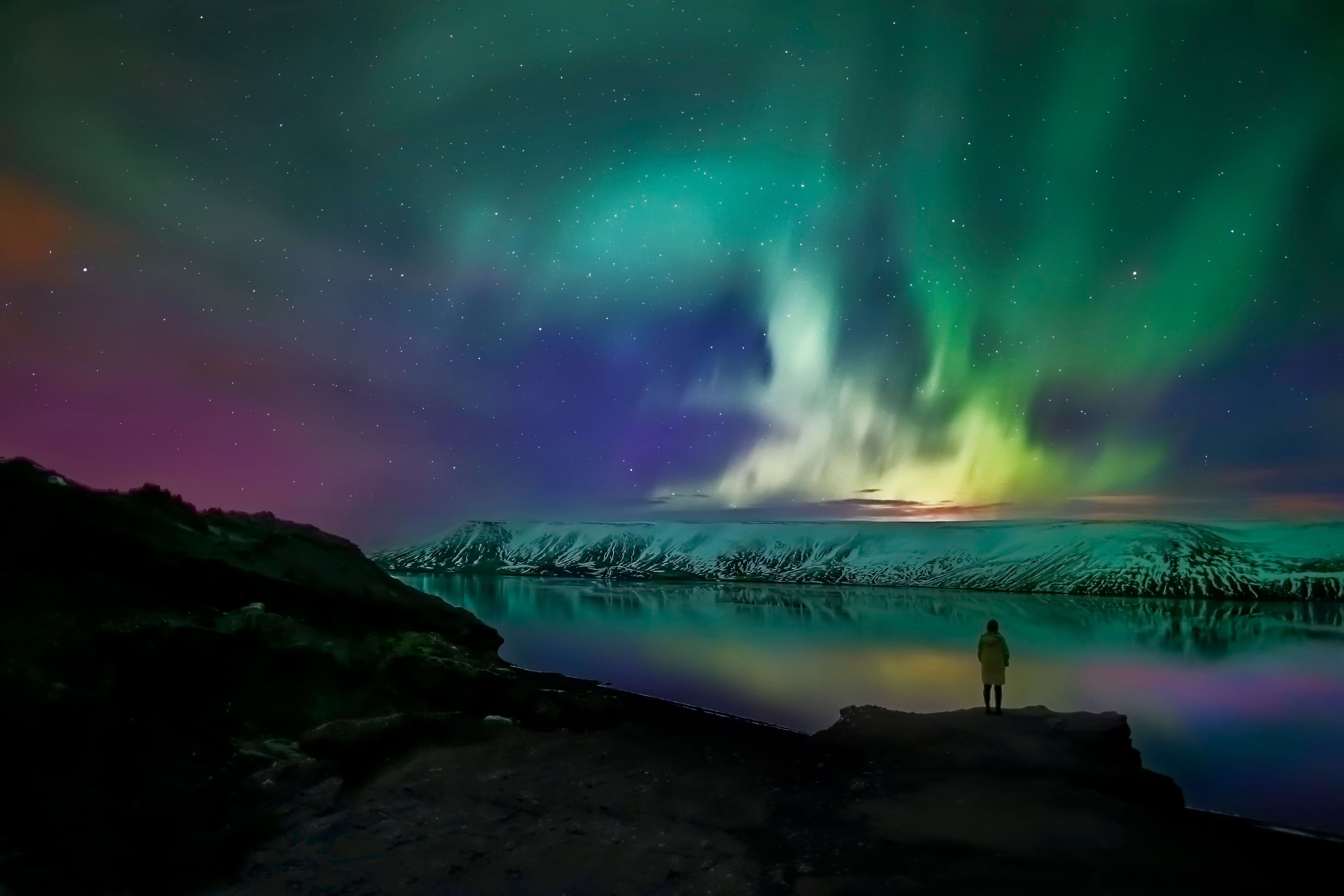What is the best time to visit Iceland to see the Northern Lights?
Iceland’s a popular place for tourists hoping to catch sight of the Northern Lights. If that’s you, and you’re at the trip planning stage, you’ll be keen to find out when is the best time to visit Iceland to see them. But the answer might surprise you…

Northern Lights season
The Northern Lights can be present in the Earth’s upper atmosphere year-round. However, because we only see them when it’s sufficiently dark, there’s little point in timing your visit for June or July if that’s your big bucket list item. Broadly speaking, Iceland’s aurora season starts in mid-August and finishes in April. That gives you plenty of flexibility if you’re hoping to witness hem during a holiday here.
The pros and cons of aurora-spotting in winter
Many travellers assume that because it’s the darkest season, winter is the best time of year to visit Iceland to see the Northern Lights. To an extent that’s true: they do often show up at this time of year. As night falls by mid to late afternoon, you might even see them early in the evening, which might be an advantage if you aren’t a fan of late nights or are travelling with younger children.
However, planning a trip for this time of year also has a few downsides. One significant issue is the weather. You’ll need clear skies to be able to see the Northern Lights, but in the Icelandic winter that means it will also be cold. Often, you’ll need to stand around in the countryside to either wait for them to show up or watch them, so you’ll need thick-soled boots and suitable clothing.
Try the shoulder season instead
If that doesn’t sound like fun, there’s another option, and that’s to time your Northern Lights hunt for autumn or spring. The weather’s milder in comparison, so it will be much more pleasant to be hanging around outside. All you need is for fine weather to be forecast so you have clear skies and a strong Kp score to give you a promising chance. Booking an organised tour means that you’ll tap into expert local knowledge and be in the right place at (hopefully) the right time.
Auroral activity peaks at the equinoxes
Solar activity, which creates the colourful displays of the Northern Lights, comes in unpredictable bursts. Nevertheless, statistically it’s more likely to peak around the spring and autumnal equinoxes. This makes March, September and October better times of year to see the aurora borealis in Iceland than during the depths of winter.
Why is this? The aurora borealis happens when there are geomagnetic storms, and this is the time of year when they are more likely to occur. A stream of particles is released, which we call the solar wind. Such ejections interact with different gases in the Earth’s atmosphere which is how we see the various colours – typically green, purple and red. Because the Earth tilts on its axis, we most commonly see them at high latitudes in places – such as Iceland.
Take a Northern Lights tour with Gray Line Iceland
Gray Line Iceland’s Northern Lights excursion runs nightly from late August to late April, with convenient pick-ups from downtown Reykjavik. Tours last for around 4 hours and the departure time varies according to the season – earlier in winter and later in spring and autumn.
It’s also possible to combine a Northern Lights tour with other sightseeing. For instance, Gray Line Iceland offers tours that combine an aurora hunt with a visit to the Golden Circle, South Coast attractions or the Blue Lagoon, as well as a cruise out on Faxaflói Bay if you’d like to see them from the water.